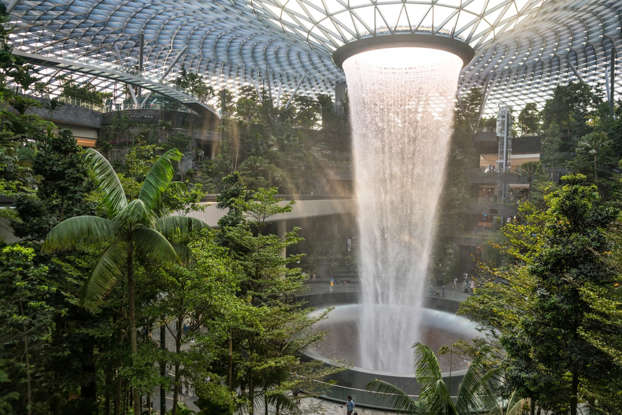When you step into any lift in Singapore, you’re experiencing one of the world’s most rigorously regulated and technologically advanced vertical transportation systems—a testament to how seriously this nation takes public safety and urban efficiency.
Singapore’s approach to lift management isn’t merely about getting from floor to floor; it’s about creating a robust infrastructure that supports the daily lives of millions whilst setting global benchmarks for safety and reliability. The figures speak volumes: the Singapore elevator and escalator market reached 1,241 units in 2024 and is projected to reach 1,527 units by 2030, growing at a CAGR of 3.52%. This isn’t just statistical growth—it’s evidence of a nation building upwards with purpose and precision.
The Architecture of Safety: Understanding Singapore’s Lift Standards
The Building and Construction Authority (BCA) has established what can only be described as a fortress of regulations protecting every Singaporean who uses vertical transportation. Under the prevailing regulatory regime, passenger lifts are required to undergo maintenance at least once every month, and lifts should also be examined, inspected and tested once each year. This isn’t bureaucratic overreach—it’s systematic care translated into policy.
Consider the depth of these safety measures. Every elevator installation in Singapore must demonstrate compliance with stringent operational requirements:
-
Door Safety Protocols: Lifts only move when doors are completely closed, eliminating a primary source of accidents
-
Precision Landing Standards: All lifts must stop within 10mm of ground level, ensuring accessibility for wheelchair users and those with mobility challenges
-
Emergency Response Systems: Mandatory emergency communication systems and backup power provisions
-
Regular Professional Inspections: Independent authorised examiners must certify safety annually
The consequences for non-compliance aren’t trivial. The Building and Construction Authority introduced a fine of up to $5,000 for lift maintenance contractors who fail to meet the requirements. This financial deterrent ensures that safety isn’t negotiable—it’s non-optional.
The Evolution of Vertical Transportation in Singapore
Singapore’s elevator landscape reflects broader urban transformation trends. Elevators used in the residential sector accounted for the largest share, despite low purchasing power due to high interest rates, highlighting how essential these systems have become to daily life, even during economic challenges.
The residential dominance isn’t coincidental. The number of resident households in Singapore was 1,463,400 in 2024, an increase of 22.0% over the past 10 years. As Singapore grows vertically rather than horizontally due to land constraints, lifts become the arteries of modern living.
Modernisation: When Technology Meets Necessity
The government’s approach to lift modernisation demonstrates strategic thinking about infrastructure longevity. The Building and Construction Authority (BCA) highly recommends that lifts which are more than 15 years old undergo lift modernisation. This isn’t merely a suggestion—it’s recognition that ageing infrastructure poses both safety risks and operational inefficiencies.
The 2024 Maintenance Control Plan emphasises two critical strategies:
-
Life Cycle Approach: Comprehensive maintenance encompassing regular servicing and strategic part replacements
-
Component Rejuvenation: Addressing parts obsolescence proactively rather than reactively.
The Economics of Vertical Safety
Singapore’s investment in elevator infrastructure reflects economic pragmatism alongside safety concerns. The Building and Construction Authority (BCA) recently estimated the total construction demand for 2025 to range between USD 35 billion and USD 39 billion in real terms. Within this massive infrastructure spend, elevator systems represent critical investments in urban functionality.
The modernisation market alone is expected to reach USD 146.07 million by 2030. This isn’t just about replacing old equipment—it’s about maintaining Singapore’s competitive edge as a global business hub where infrastructure reliability directly impacts economic productivity.
Technology Integration and Future Developments
Singapore’s elevator industry embraces technological advancement with characteristic thoroughness. Recent innovations include AI-integrated systems that predict maintenance needs before failures occur, energy-efficient designs that reduce operational costs, and enhanced accessibility features that serve Singapore’s ageing population.
The permit-to-operate system exemplifies Singapore’s comprehensive approach. Every lift owner must display current certification, creating transparency and accountability that benefits all users. This system ensures that responsibility for lift safety isn’t diffused—it’s assigned and regularly verified.
The Human Impact of Systematic Excellence
Behind every regulation and statistic lies human experience. When elderly residents can reliably reach their flats, when parents confidently use lifts with young children, when office workers arrive punctually at meetings—these routine experiences depend entirely on the systematic excellence Singapore has built into its elevator infrastructure.
The contrast with less regulated environments is stark. Singapore’s comprehensive approach prevents elevator failures, extended outages, and safety incidents that plague other urban centres. This reliability isn’t accidental—it’s engineered through policy, enforced through regulation, and maintained through constant vigilance.
Building Tomorrow’s Vertical Infrastructure Today
Singapore’s approach to lift management offers lessons for cities worldwide grappling with vertical urbanisation. The integration of safety requirements, technological advancement, and systematic maintenance creates infrastructure that serves not just today’s needs but tomorrow’s challenges.
As Singapore continues expanding its construction sector and embracing innovative building technologies, the elevator and escalator industry will remain central to urban functionality. The commitment to excellence in vertical transportation reflects broader values: that public infrastructure should serve all citizens reliably, safely, and efficiently.
Every time you press a button and trust that the doors will open, that the lift will respond, that you’ll arrive safely at your destination, you’re experiencing the result of decades of thoughtful policy development and rigorous implementation. This systematic approach to elevator safety and efficiency demonstrates why choosing the right lift in Singapore isn’t just about convenience—it’s about participating in one of the world’s most sophisticated urban infrastructure systems.





More Stories
Quality Paving by Professional Asphalt Contractor
Excavating Contractor Guide to Safe Backyard Digging Projects
How to Find the Best Construction Companies in Christchurch